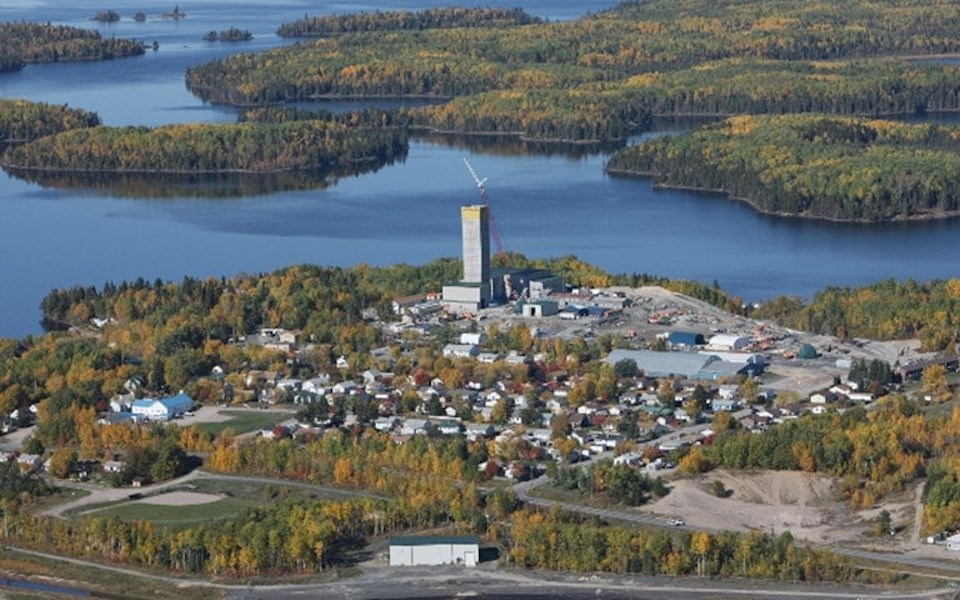The Red Lake Mine complex has plenty more gold to be discovered, said its new Australian owners.
"We have not scratched the surface of Red Lake's full potential," said Evolution Mining's chief operating officer Bob Fulker in a Sept. 1 webcast to Evolution's investors, about recent discoveries that offer opportunity to dramatically increases production while maintaining a longer mine life.
Senior executives of the Sydney-headquartered mining company talked of the open-ended potential of the three-mine operation and the numerous exploration opportunities to grow the gold base inside their 457-square-kilometre property.
Fulker said Evolution's aspirational goal of ratcheting up annual production to 200,000 ounces of gold may be just the starting point.
There's enough gold in the system, he said, to make a strong case to further boost production to 300,000 to 500,000 ounces annually over the next five years.
Sydney-based Evolution, the six-month-old operators of the complex, have brought fresh eyes in reintrepreting the resource base within the 70-year-old northwestern Ontario mining camp.
The company knew the historic gold camp still had loads of potential where they were in the tire-kicking, due diligence phase last year in considering whether to acquire the complex being dangled by Newmont.
What they didn't expect was to find new vast resources close to existing mine workings that were virtually untouched.
Their confidence is backstopped by a new mineral estimate, posted in August, outlining an 11-million-ounce gold resource, grading at 7.1 grams per ounces in 48.1 million tonnes, with the strong possibility of discovering a lot more.
"Red Lake is located in one of the world's greatest gold mining camps and we're focused on making the most of this address," said Fulker.
There's also the possibility of gold potential on a property-wide basis that they fully expect to make a major investment in either upgrading or expanding milling capacity at Red Lake in the near future. The new resource estimate is due out in early 2021.
Until last month's resource update, the miner had not generated much in the way of news flow since announcing last fall it was acquiring the three-mine complex from Newmont. The sale was finalized at the end of March.
Evolution viewed Red Lake an an undercapitalized asset in a rich high-grade environment that was ripe for a turnaround with some intelligently invested capital. The company has committed to investing US$100 million in operations, moslty in the form of new technology.
Executive chair Jake Klein said Red Lake had a rapidly closing shelf life due to a lack of investment in development and operation by the previous ownership.
"The mine had been depleting resources and reserves way too quickly and was really in harvesting mode and was heading toward closure."
Evolution has committed drilling 100,000 metres every year and budgeting US$50 million annually over the three years to restock the gold pipeline prospects to the point of where they are constrained by mill capacity.
Some of the "low hanging fruit," according to Fulker and Glen Masterman, vice-president of discovery and business development, is a new resource in the Upper Campbell area of the mine with 4.3 million ounces, grading 10.5 grams per tonne that begins at the surface and extends down 1,200 metres.
Upper Campbell has them contemplating a surface decline – northeast of the Reid Shaft and Campbell mill – or a potential open pit to extract those resources, and also access the nearby H-G Young prospect to the northwest, which has the potential to grow beyond its current 400,000-ounce resource.
"We're investigating all possibilities to enable Red Lake to deliver for a long time to come," said Fulker, with a mine life that lasts decades, not years.
Evolution inherited a massive historic drill database consisting of 47,000 holes from seven million metres of drilling and six million samples. They went back to the basics in reinterpreting reams of information to present a big picture, holistic, geological framework of the whole operation that can be viewed from a single consolidated database for the first time.
With a better handle on the geological setting, Masterman believes there are future high-grade discoveries to be made in their step-out drilling program.
Masterman said there "incredible, well mineralized" and "undertested" corridors in the hanging wall of the mine trends at Red Lake and Campbell. These will be the subject of their upcoming drill programs to target and drill extensions of these corridors.
"I believe the opportunity for us at Red Lake is a great example of where the whole is greater than the sum of the individual parts."
"We've been able to bring a different lens and approach to the mineral resource solution."
The new gold resource resolves what had been a very uncertain outlook at Red Lake, said Amber Adams, Red Lake's interim general manager.
"We have a very bright future ahead of us, not just employees but the community as a whole," said the 16-year veteran at Red Lake, who believes Evolution is on the path of "restoring the mine to its former glory days."
The culture shift and adopted best practices have been well-received by the predominantly local workforce, have opened up lines of communication, and have employees excited about the future.
Some workforce downsizing was carried out this summer with the reduction of 120 full-time positions, representing a savings of AUD$12 million.
They've also reduced the number of mine fronts to six areas, closer to existing processing facilities; increased monthy development rates from 600 metres to 1,000 metres; made improvements to debottleneck material movement systems; optimize haulage routes to speed the flow of ore to the mill; and seen Evolution make investments in a new fleet of large capacity vehicles.




